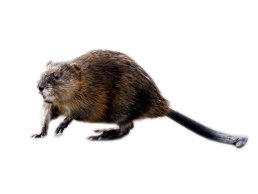
Muskrats or Nutria?
Nutria and muskrats are semi-aquatic rodents that cause issues for property owners. Large numbers of the pests can damage natural habitats as well as costly landscaping.
Spotting the difference between muskrat and nutria damage can be difficult. Both animals harm water control structures and burrow into banks, levees, and dikes. This activity may lead to erosion and flooding. Nutria also damage wetlands when they overgraze plants.
Muskrat vs. Nutria Identification
Although the pests have similar effects on property, some differences between muskrats and nutria identify these animals. Residents who catch a glimpse of the pest itself or its home will find it easier to pinpoint the cause of their problem.
Size
There is a clear difference in muskrat vs. nutria size. Muskrats weigh about three to four pounds, while nutria range from 11 to 22 pounds.
Tail
When trying to decide whether an animal is a muskrat or a nutria, check the pest’s tail. Muskrats have thin, scaly tails that are flat on the sides. On the other hand, nutria tails are rounded, hairy, and rat-like.
Den
Nutria use foliage to make beds and dig volleyball-sized dens in ditches and river banks. Muskrats build mounds of plants and mud with underground entrances.
Control
Many methods for recognizing muskrats vs. nutria rely on visual cues. Since both pests are nocturnal, it may be tough to spot either one. For reliable identification and removal, the best bet is to contact a local Critter Control office.